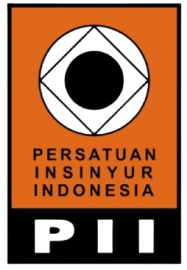ANALISIS STABILITAS KAPAL PENGANGKUT AMMONIA
DOI:
https://doi.org/10.35314/k4xfgg20Keywords:
Lines plan, General Arrangement, stabilitas kapal, , ammonia.Abstract
Abstract
The conversion of a Landing Craft Tank (LCT) into an ammonia carrier represents an innovative effort to support the development of a sustainable maritime industry. This study aims to evaluate the technical feasibility of converting an LCT into an ammonia transport vessel through the parent design approach. The assessment focuses on three principal aspects—lines plan, general arrangement, and intact stability analysis—using Maxsurf Stability Student Version 2024. Simulations were conducted for three loading conditions (100%, 50%, and 10%), taking into account the variations in hydrostatic parameters (KB, KG, BM, and GM). The results indicate that all loading conditions satisfy the criteria of the IMO Intact Stability Code 2008 (MSC.267(85)), with corrected GMt values ranging from 2.36 to 2.81 m and maximum GZ values between 0.49 and 0.83 m. The analysis of the righting arm area further confirms compliance with IMO standards. For the area under the GZ curve from 0° to 30°, the obtained values are 10.992 m·deg (100%), 14.487 m·deg (50%), and 17.136 m·deg (10%). For the range 0°–40°, the results are 15.566 m·deg (100%), 20.878 m·deg (50%), and 25.019 m·deg (10%), while for the range 30°–40°, the values are 4.573 m·deg, 6.391 m·deg, and 7.883 m·deg, respectively. The maximum righting arm (GZmax) was found to be 0.492 m for the 100% load case, 0.677 m for 50%, and 0.829 m for 10%. The ammonia cargo is stored in cylindrical tanks equipped with individual safety frames, totaling 176 cylinders with a combined cargo weight of 32 tons. The differences in stability tendencies among the load cases are primarily attributed to variations in weight distribution, as the ammonia and ballast tanks are positioned on the upper deck. This study is limited to the evaluation of intact stability, without considering damage stability or wave-induced effects. Future research is recommended to optimize the spatial arrangement of ammonia cylinders and to assess the vessel’s stability under wave-induced conditions.












